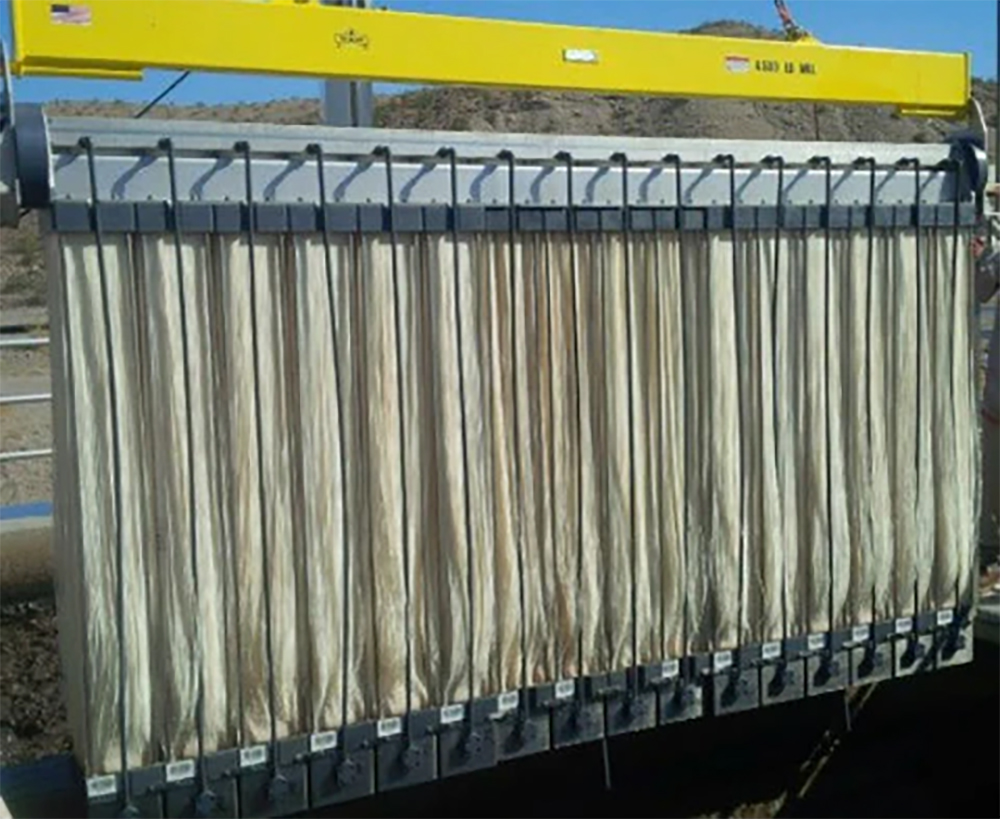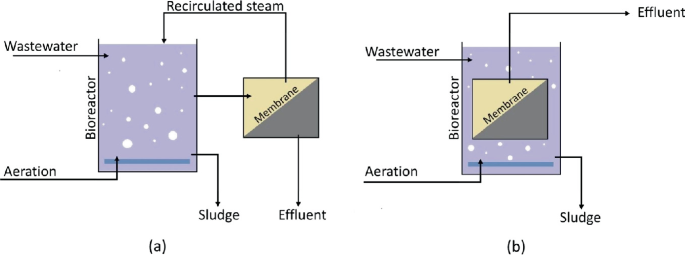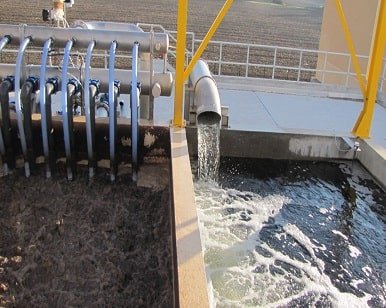Understanding the Basics of Membrane Bioreactor Systems for Wastewater Management
Understanding the Basics of Membrane Bioreactor Systems for Wastewater Management
Blog Article
How Membrane Layer Bioreactors Are Reinventing Water Filtration Equipments
The emergence of membrane bioreactors (MBRs) represents a substantial innovation in the area of water filtration, merging biological treatment procedures with cutting-edge membrane filtration modern technologies. As worldwide water shortage escalates, the function of MBRs in helping with drinkable water reuse and lasting water monitoring comes to be progressively critical.
Introduction of Membrane Bioreactors
Membrane bioreactors (MBRs) stand for a substantial development in water purification technology, as they combine organic treatment processes with membrane filtering. This assimilation improves the performance of wastewater therapy by making use of bacteria to degrade organic contaminants while at the same time utilizing semi-permeable membranes to separate treated water from put on hold microorganisms and solids.
The MBR system normally is composed of an organic reactor where the microbial populace metabolizes contaminants, followed by a membrane filtration device that preserves biomass and allows only tidy water to pass through. This twin performance causes higher effluent top quality compared to standard treatment approaches. MBRs can be operated in both set and constant circulation modes, supplying versatility in layout and application.
Furthermore, MBRs are identified by their small impact, making them suitable for metropolitan setups with area restraints. Membrane Bioreactor. They also allow the recovery of water for reuse, therefore contributing to water sustainability initiatives. While MBR innovation has actually gained appeal in commercial and metropolitan applications, its operational complexities and power needs necessitate cautious factor to consider throughout implementation. Generally, MBRs go to the forefront of enhancing water therapy performance and quality, showcasing the capacity for ingenious remedies in environmental management.
Advantages of MBR Technology
The integration of biological treatment with membrane filtration provides various benefits for water purification processes. One of the main benefits of Membrane Bioreactor (MBR) innovation is its capability to properly get rid of both natural and inorganic pollutants, resulting in top notch effluent. The membrane layers serve as a physical barrier, protecting against put on hold solids and pathogens from passing through, which enhances the overall safety and reliability of cured water.
In addition, MBR systems need a smaller footprint contrasted to standard treatment methods, enabling extra reliable area usage. This compact layout is especially beneficial in urban setups where land is restricted. MBRs also show functional flexibility, suiting differing influent qualities and circulation prices without significant efficiency deterioration.
Furthermore, the procedure uses enhanced nutrient elimination abilities, particularly for nitrogen and phosphorus, which are critical for protecting against eutrophication in getting waters. The reduced sludge manufacturing related to MBR technology likewise translates to reduce disposal costs, making it a cost-effective remedy in the long run - Membrane Bioreactor. Overall, the benefits of MBR technology setting it as a leading choice for cutting-edge and sustainable water filtration systems, attending to both environmental and economic problems
Applications in Water Purification
Applications of Membrane Layer Bioreactor (MBR) technology in water purification are impactful and varied, dealing with different therapy needs across numerous sectors. MBRs successfully incorporate biological treatment procedures with membrane layer filtration, making them optimal for metropolitan wastewater treatment, industrial effluent monitoring, and also potable water reuse efforts.
In metropolitan settings, MBRs are progressively used to enhance the high quality of treated wastewater, permitting compliance with strict discharge policies and assisting in the recycling of water for watering and non-potable usages. Their compact have a peek at this website style additionally makes them ideal for city settings where room is restricted.
Industrially, MBR modern technology is made use of to deal with process water and wastewater, especially in industries such as food and beverage, pharmaceuticals, and textiles. By effectively removing impurities and put on hold solids, MBRs assist markets reduce environmental impacts while recovering beneficial sources from wastewater streams.
Additionally, MBRs are gaining traction in decentralized water therapy applications, where small systems can be deployed in remote areas or creating areas. This versatility enables areas to attain sustainable water management remedies, improving access to tidy water while lowering reliance on conventional treatment approaches.
Situation Studies and Success Stories

In an additional example, a fabric manufacturing center in Bangladesh adopted MBR modern technology to address its wastewater difficulties. The system reduced chemical oxygen need (COD) levels from 1,200 mg/L to less than 100 mg/L, hence satisfying governing requirements and significantly lessening ecological effect.
The College of Cape Community's MBR installment has actually proven reliable in treating greywater for non-potable reuse on school. This project not just saves safe and clean water but likewise works as an academic version for lasting practices.
In addition, a moved here seafood processing plant in Norway used MBR modern technology to treat effluents consisting of high degrees of raw material, accomplishing over 90% toxin removal. These study emphasize MBR modern technology's flexibility and its crucial duty in enhancing water quality across diverse applications.
Future of Water Therapy Solutions
As international water deficiency and pollution challenges increase, cutting-edge water therapy solutions are becoming increasingly important to make certain lasting accessibility to tidy water. The future of water therapy depends on the integration of advanced technologies that enhance the efficiency and effectiveness of purification processes. Membrane bioreactors (MBRs) go to the center of this advancement, incorporating organic therapy with membrane layer filtering to create top notch effluent ideal for numerous applications.

Emerging trends such as source recuperation from wastewater, consisting of nutrients and energy, will better change treatment facilities right into green centers. Advancements in nanotechnology and membrane layer materials promise boosted performance and longevity of purification systems.

Verdict
In final thought, membrane bioreactors stand for a significant innovation in water purification modern technologies, successfully combining organic therapy with sophisticated membrane layer filtering. The numerous advantages, consisting of enhanced effluent top quality and minimized spatial requirements, make MBRs especially suitable for metropolitan applications. Their duty in potable water reuse and lasting water management highlights their significance in addressing worldwide water deficiency challenges. Continued r & d will better enhance the effectiveness and fostering of MBR technology, guaranteeing a resistant future for water therapy solutions.
The introduction of membrane layer bioreactors (MBRs) stands for a significant development in the field of water purification, combining organic therapy procedures with sophisticated membrane filtration technologies. As global water shortage increases, the duty of MBRs in promoting safe and clean water reuse and lasting water management becomes significantly critical. They likewise allow the recovery of water for reuse, thus contributing to water sustainability initiatives.As global anonymous water deficiency and pollution difficulties escalate, cutting-edge water therapy options are ending up being increasingly important to ensure lasting accessibility to clean water. Their role in safe and clean water reuse and lasting water administration highlights their importance in addressing international water deficiency obstacles.
Report this page